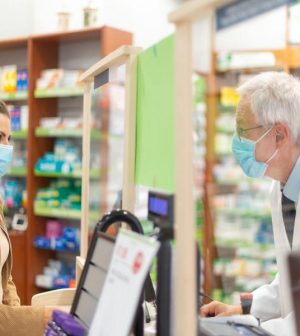- Skip Storing This Everyday Product in the Fridge Door
- Green Tea + B3 Pairing May Boost Brain Health
- Navigating Your Midlife Crisis: Embracing New Possibilities
- City Raccoons Showing Signs of Domestication
- Mapping the Exposome: Science Broadens Focus to Environmental Disease Triggers
- One Week Less on Social Media Linked to Better Mental Health
- Your Brain Changes in Stages as You Age, Study Finds
- Some Suicide Victims Show No Typical Warning Signs, Study Finds
- ByHeart Formula Faces Lawsuits After Babies Sickened With Botulism
- Switch to Vegan Diet Could Cut Your Greenhouse Gas Emissions in Half
1 in 3 Neighborhoods in Major U.S. Cities Is a ‘Pharmacy Desert’

One-third of neighborhoods in the 30 largest U.S. cities are “pharmacy deserts,” and this is much more common in Black and Hispanic communities, a new study finds.
What’s a ‘pharmacy desert’? In general, in a neighborhood where most residents have cars, the study labeled it a pharmacy desert if the average distance to the nearest pharmacy was 1 mile or more. That distance was reduced to ½ mile or more in low-income neighborhoods where at least 100 households had no vehicle, the University of Southern California researchers explained.
“Traveling a mile to get your prescription medications may be convenient for people that own a car. Traveling a mile, or even half a mile, may be difficult for people who live in low-income neighborhoods and don’t drive, particularly older adults who rely on walking or public transportation,” study co-author Dima Mazen Qato said in a university news release. Qato is chair and an associate professor in the School of Pharmacy.
The researchers analyzed 2007-2015 data on census tracts/neighborhoods in cities with populations of 500,000 or more. Census tracts are smaller than ZIP code areas and typically have populations between 1,200 and 8,000 people.
The study found that “one in three neighborhoods throughout these cities were pharmacy deserts, affecting nearly 15 million people,” study co-author Jenny Guadamuz said in the release.
“However, limited access to pharmacies disproportionately impacts racial/ethnic minorities — 8.3 million Black and Latino residents of these cities live in deserts,” added Guadamuz, a postdoctoral fellow in the School of Pharmacy.
The cities with the worst gaps: Los Angeles, Chicago, Albuquerque, Dallas, Memphis, Boston, Milwaukee, Baltimore and Philadelphia.
Lack of access to pharmacies may contribute to racial health disparities, according to the authors. The study was published May 3 in the journal Health Affairs.
“We focused on cities because of racial/ethnic residential segregation and the fact that more than 80% of the Black and Latino population in the U.S. live in cities,” said Qato, also a senior fellow at the Center for Health Policy & Economics.
“Our findings suggest that addressing disparities in geographic access to pharmacies — including pharmacy closures — is imperative to improving access to essential medications and other health care services in segregated minority neighborhoods,” added Qato.
More information
The Center for American Progress has more on racial/ethnic health disparities.
SOURCE: University of Southern California, news release, May 3, 2021
Source: HealthDay
Copyright © 2025 HealthDay. All rights reserved.










